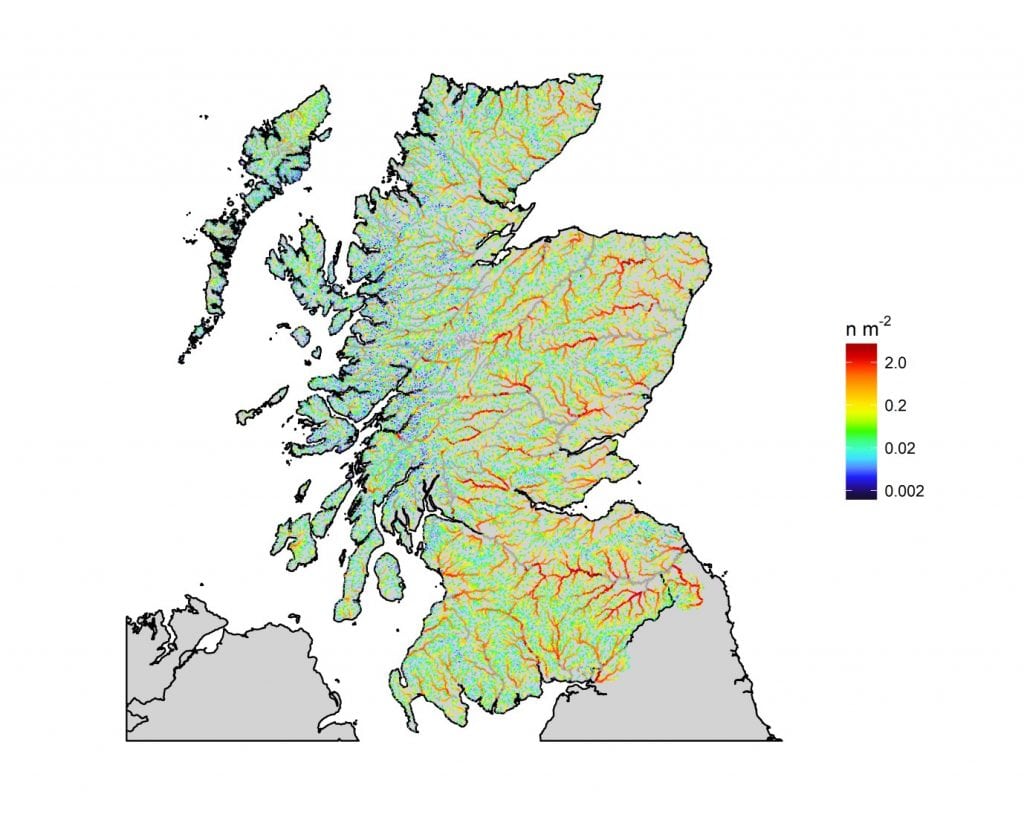Marine
Not all rivers are the same: new analysis reveals how juvenile salmon numbers vary across Scotland
September 19, 2018 by Marine Scotland Communications No Comments | Category Collaborations, Freshwater Fisheries, Marine Directorate Science
Electrofishing is a commonly used method for capturing, counting and sampling fish populations. Where electrofishing is performed according to carefully defined standards, and combined with appropriate statistical analysis, it is possible to estimate the number of fish in a particular section of a river. Electrofishing data have been collected across much of Scotland for over twenty years, however, they are often hard to interpret without a benchmark to compare against. A benchmark indicates how many fish are expected in a river, assuming that the environment and fish populations are healthy and by comparing the observed fish numbers against a benchmark it is possible to determine whether rivers are producing approximately the number of fish that are expected, more or less. Benchmarks are difficult to produce because rivers with different environmental characteristics support variable numbers of fish.
Over the last four years scientists from Marine Scotland’s Freshwater Fisheries Laboratory have collated and analysed data that they have collected along with Fisheries trusts, District Salmon Fishery Boards, SEPA and SNH to develop a National Juvenile Salmon Density Model for Scotland. The model uses information on the landscape characteristics of rivers (e.g. altitude, catchment area) to understand and predict how salmon densities vary between rivers, regions and years thereby providing a benchmark that could be used to assess salmon populations against (Figure 1). The model was underpinned by electrofishing data from 25 organisations, collected during 3848 visits to 1861 sites in 179 catchments over 19 years. New spatial data analysis approaches were developed to characterise habitat across Scotland (using landscape characteristics) and advanced statistical approaches were used to harmonise the dataset to account for differences in fish capture probability between organisations, habitats, regions and years. The resulting benchmark predictions for Atlantic salmon fry (young fish in their year after hatching) are shown in Figure.1 below:

Figure 1 Benchmark densities (those expected if the river environment and salmon populations were healthy) for Atlantic salmon fry predicted from the National Juvenile Density Model for Scotland. Grey lines show rivers where it was not possible to predict fish densities due to a lack of electrofishing data (mainly big and deep rivers where fishing is not possible). Thicker lines show larger rivers. River lines based on digital spatial data licensed from the Centre for Ecology & Hydrology, © NERC (CEH).
In 2018 Marine Scotland developed the National Electrofishing Programme for Scotland (NEPS), a strategically designed statistical sample of 810 sites across Scotland, delivered locally by fisheries trusts and boards. Data collected as part of this programme will be compared against the new national benchmarks. A further report on this work will be provided by the end of March 2018 that explains overall progress and explores the potential for assessing the status of Atlantic salmon using electrofishing data.
Further Information
- Access the “Development of a large-scale juvenile density model to inform the assessment and management of Atlantic salmon (Salmo salar) populations in Scotland” on the Ecological Indicators website
- National Electrofishing Programme for Scotland (NEPS) web pages
- National Electrofishing Programme for Scotland (NEPS) information leaflet
Tags: electrofishing, Freshwater, population, research, stock


Leave a comment